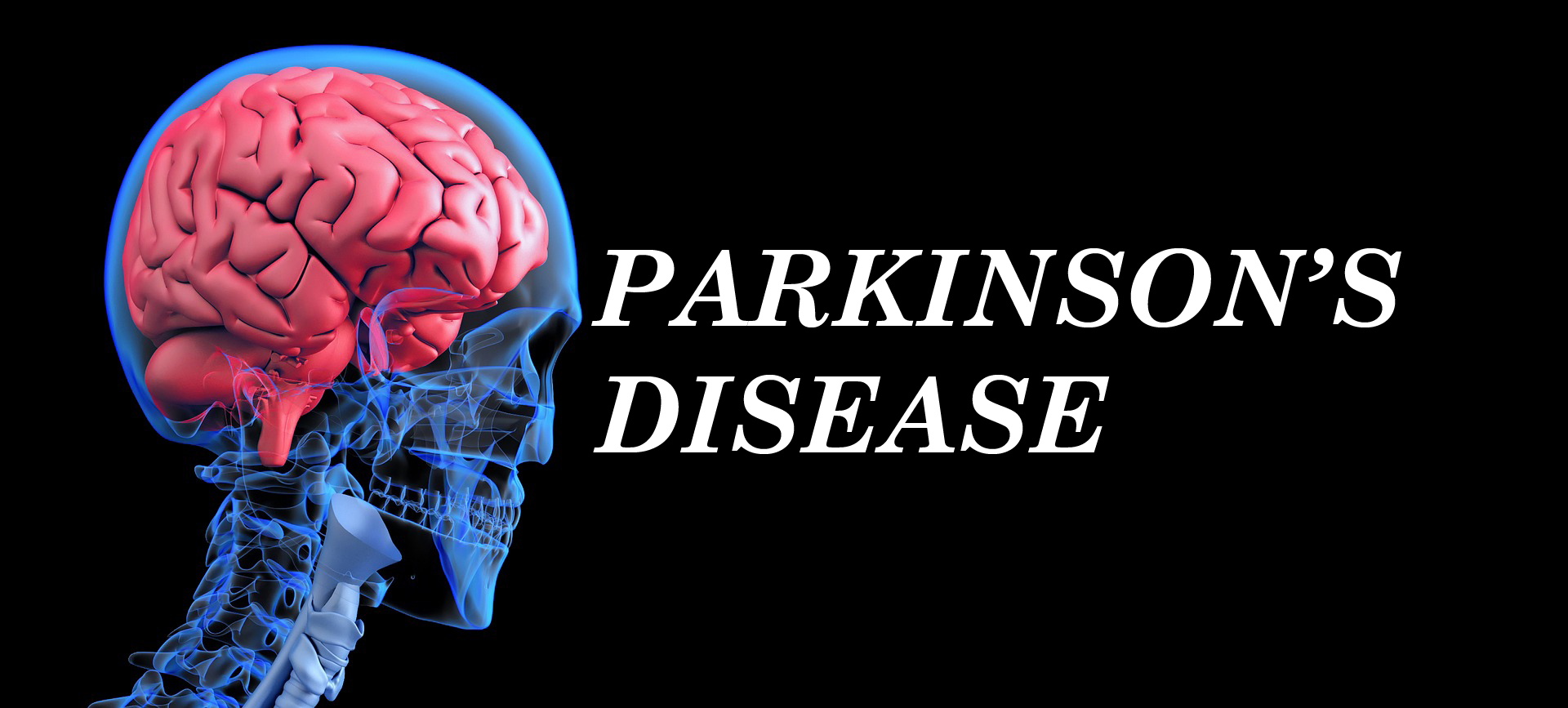His brother was catching up to him and then taking the lead in their regular runs. That just hadn’t been the experience on their enjoyable time exercising together. His gait also seemed off-kilter – one of his feet would slap the ground. Fatigue? Aging? Arthritis? Over-exertion? Something else? Something as simple as buttoning a shirt became a problem – not a simple matter at all. For another Capital Region resident, getting around was increasingly problematic, and she avoided social gatherings or leaving the house at all, if possible. Another hoped for understanding: A person off-balance and slurring words may well be living with Parkinson’s Disease.
The answer was the same for these individuals – Parkinson’s Disease. The symptoms, the pace at which problems appeared and the reasons behind them were much more complex and varied. The important steps for all three were receiving a diagnosis, obtaining medical care that focuses on Parkinson’s and takes into consideration other conditions of the particular individual, and taking measures to promote the best quality of life and activity. Their medical and life plans would evolve as conditions presented.
We met physicians involved in a continuum of involvement in research and education to bring the latest learning and treatment opportunities to their patients. And we met Capital Region residents living with Parkinson’s Disease who are working with their medical team in treatment planning and integrative therapies of exercise, nutrition and more that can provide the best quality of life, as well as ensuring that they absorb as much information as possible to use in the present and to consider for future planning. For the healthcare team and patients, it’s a partnership.
Parkinson’s Disease is a progressive neurodegenerative disease, where there is a loss of cells in the brain or spinal cord. Parkinson’s impacts the dopamine-producing neurons in the substantia nigra part of the brain. Dopamine is the neurotransmitter regulating movement and emotions. We may also find abnormal protein build-up in this area of the brain in Parkinson’s patients.
Some visible symptoms may include tremors, stiff limbs, and slowness of movement (bradykinesia), shuffling gait or foot that seems stuck or frozen in one place, trouble with balance and slurring of words, but signs vary among patients in what symptoms show up and at what point. There also are non-motor symptoms beyond what the casual observer sees and comprehends – among them, sleep difficulties, cognitive impairment, loss of smell and swallowing, depression and apathy.
About 1 million people in the United States have Parkinson’s Disease, with approximately 60,000 new diagnoses annually. The average age is 50 – 60, but there are younger patients as well. The observations of James Parkinson 201 years ago led to the recognition of the disease. While the cause is not clearly understood, researchers have identified genetic and environmental conditions as contributing to its onset.
In addition to medical treatment and research here in the Capital Region, the area is home to support groups and therapy programs with active communities of persons with Parkinson’s Disease.
Partnership of treatment and support
On a rainy night in October, a community room was filled with patients and their significant others for an educational and networking gathering of the Capital District Parkinson’s Disease Support Group (cdparkinsons.org). On that evening, Eric Molho, MD, a neurologist and Director of the Movement Disorders and Parkinson’s Disease Center at Albany Medical Center (amc.edu), discussed the nature and treatment of the disease as well as the undertaking of some research trials at AMC. Audience members had lots of questions and shared experiences, ranging from a newly diagnosed individual to a patient who has been seeing Dr. Molho for 20 years.
“Parkinson’s is a complicated disease,” Dr. Molho explains. The search goes on for the development of better biomarkers to indicate that Parkinson’s is present. The challenges in diagnosis include the variable nature of the disease and symptoms of other diseases that may seem like Parkinson’s but are not. The objective, he adds, is to improve opportunity for diagnosis and be able to diagnose as soon as possible so that treatment and lifestyle can be put in place that will aid the patient. Early diagnosis means action before more cell loss and degenerative effects. Research has advanced for more targeted treatments. While the medication has been around for decades, methods have improved for the delivery of a more consistent response in attempt to avoid the ups and downs. Monitoring and adjustment of medication are regular parts of treatment. One newly diagnosed patient in the community meeting wondered what the future might hold. “The progression of Parkinson’s Disease is highly variable among patients,” in terms of the pace of the disease and its symptoms. Dr. Molho explained.
Exercise: a critical element
Treatment planning also involves how the patient is living with Parkinson’s, including being engaged in integrative or complementary therapies, such as exercise programs developed specifically for persons with Parkinson’s Disease. “Lifestyle is very important,” Dr. Molho says, noting that sedentary, isolated persons will likely have more difficulty. There are a variety of Parkinson-specific exercise programs in the Capital Region. Visit the area support group, cdparkinsons.org, to learn more.
For example, yoga can help in balance, ability to walk and flexibility. Patients who have difficulty walking may be able to exercise by stationary cycling, to help with fitness and aid motor function. Area YMCAs (cdymca.org) offer instructed Pedaling for Parkinson’s programs for people ages 30–75. Research shows that this exercise may ease some symptoms. One cyclist had stopped leaving home but, now involved in cycling, looks forward to cycling sessions for both the social and fitness benefits. The trainers see not only an increase in stamina and a sense of rejuvenation in their classes but more smiles and laughter among participants.
Non-contact boxing, such as the Fight Parkinson’s sessions at Schott’s Boxing in Albany, can build strength, agility and mind-body coordination. Equally important are the benefits of camaraderie and focus on the punch that takes the boxer to another place.
Then there is dancing, including regular sessions at the Rudy Ciccotti Family Recreational Center in Albany, led by a dance movement therapist and designed to promote balance, flexibility, coordination, and gait. Persons with Parkinson’s Disease are often joined by their spouses and partners. Not only is fitness achieved and balance improved, a regular dance attendee comments, but the sessions become “a room full of joy.” One individual with Parkinson’s disclosed that he had never been a good dancer, but since these classes, he has given his wife the gift of being comfortable on the dance floor.
Deep brain stimulation
As Parkinson’s Disease progresses over time, some patients may find that they are not as responsive to medications, are intolerant to the side-effects, and the disabling symptoms persist, even after the physician increases the dose to the optimum levels and monitors the results. For certain cases, a patient who meets these and other criteria may be a candidate for a surgical procedure, Deep Brain Stimulation (DBS), and may be referred by the physician to Julie Pilitsis, MD, Ph.D., at Albany Medical Center, Chair of the Department of Neuroscience and Experimental Therapeutics and Professor of Neurosurgery, Neuroscience and Experimental Therapeutics. About 20 percent of Parkinson’s Disease patients may be candidates for DBS, she explains, but notes that brain surgery is only when needed.
Usually, the patient has been diagnosed with Parkinson’s for five or six years when they are seeing Dr. Pilitsis. The procedure may be an option for appropriate candidates who are finding that Parkinson’s is interfering with their lives in significant ways and cannot receive relief through medication. Deep Brain Stimulation, she says, has been described as a “pacemaker for the brain.” She explains that “being able to move is key to a patient with Parkinson’s Disease. It’s about quality of life.” The operation involves implanting electrodes, thin insulated wire or lead, within certain targeted areas of the brain that control movement. The electrodes produce signals that regulate abnormal movement impulses. An extension wire placed under the skin connects the electrodes to an implanted pulse generator that transmits the signals. There’s an opportunity to fine-tune the placements for the patient. Dr. Pilitsis urges patient education about the disease and this procedure, its benefits and risks and talking with other patients who have had Deep Brain Stimulation performed. Albany Medical Center, which is also an academic and research institution, has 30 years of experience in the process, Dr. Pilitsis notes, and performs about one such operation per week or 50 annually. Research continues to build the options to help patients, she reports. Currently, they are developing a noninvasive therapy using focused ultrasound-producing beams to targeted areas of the brain.
Daily life
Patients and their caregivers offer these key steps in living with Parkinson’s: Accept the diagnosis. Be attentive to your treatment plan and work with your medical team. Listen and learn about Parkinson’s from your team and reliable resources (learn to filter out the flurry of information found on the internet and social media that is not evidence-based). Include in that plan actions to maintain your quality of life – exercise, your daily routine, such as work or social gatherings. It will likely take more planning and time to do these everyday things, but it is well worth it.





